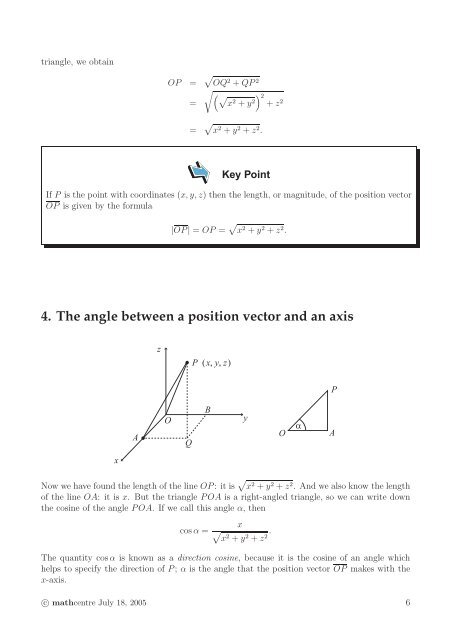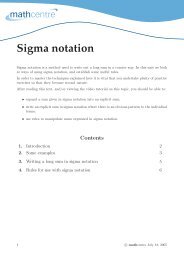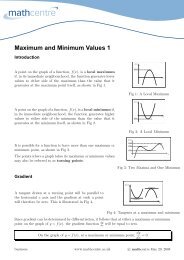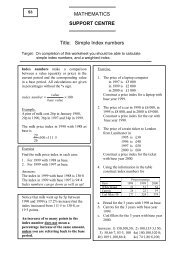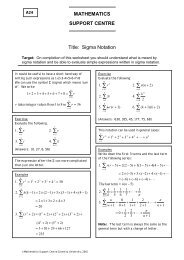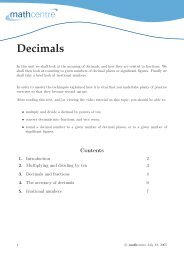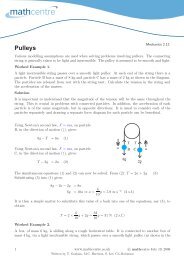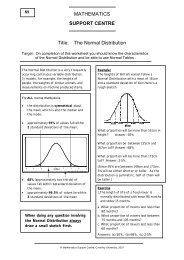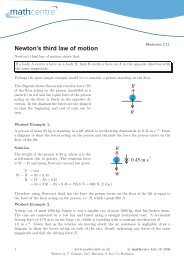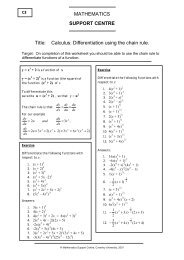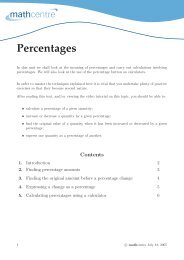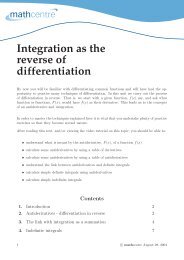Cartesian components of vectors
Cartesian components of vectors
Cartesian components of vectors
You also want an ePaper? Increase the reach of your titles
YUMPU automatically turns print PDFs into web optimized ePapers that Google loves.
triangle, we obtain<br />
OP = √ OQ 2 + QP 2<br />
=<br />
√ ( √<br />
x2 + y 2 ) 2<br />
+ z<br />
2<br />
= √ x 2 + y 2 + z 2 .<br />
Key Point<br />
If P is the point with coordinates (x, y, z) then the length, or magnitude, <strong>of</strong> the position vector<br />
OP is given by the formula<br />
|OP | = OP = √ x 2 + y 2 + z 2 .<br />
4. The angle between a position vector and an axis<br />
z<br />
P (x, y, z)<br />
P<br />
A<br />
O<br />
Q<br />
B<br />
y<br />
O<br />
α<br />
A<br />
x<br />
Now we have found the length <strong>of</strong> the line OP: it is √ x 2 + y 2 + z 2 . And we also know the length<br />
<strong>of</strong> the line OA: it is x. But the triangle POA is a right-angled triangle, so we can write down<br />
the cosine <strong>of</strong> the angle POA. If we call this angle α, then<br />
cosα =<br />
x<br />
√<br />
x2 + y 2 + z 2.<br />
The quantity cosα is known as a direction cosine, because it is the cosine <strong>of</strong> an angle which<br />
helps to specify the direction <strong>of</strong> P; α is the angle that the position vector OP makes with the<br />
x-axis.<br />
c○ mathcentre July 18, 2005 6


